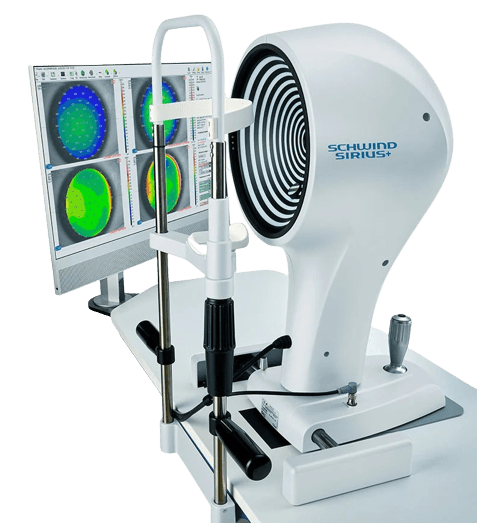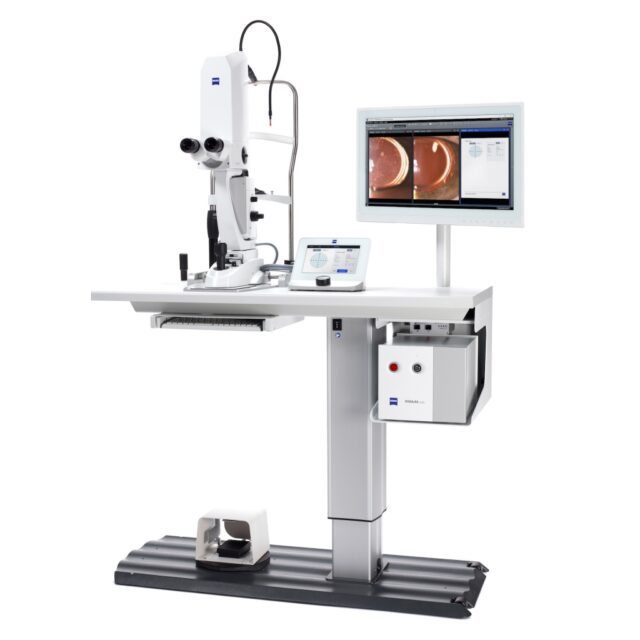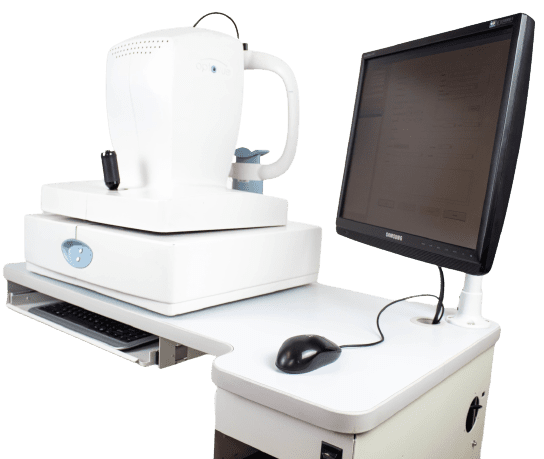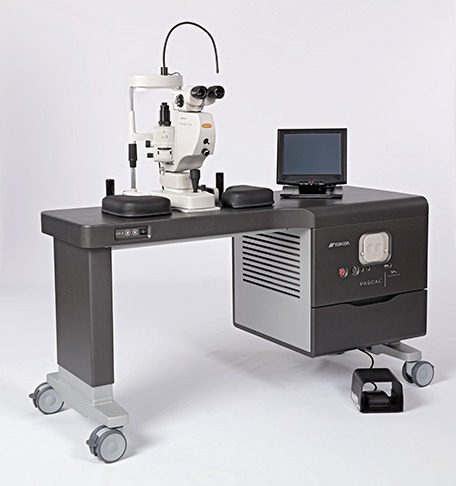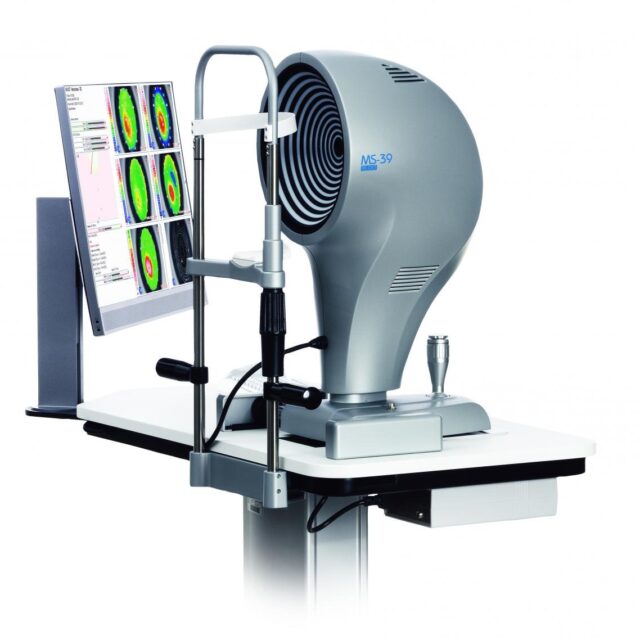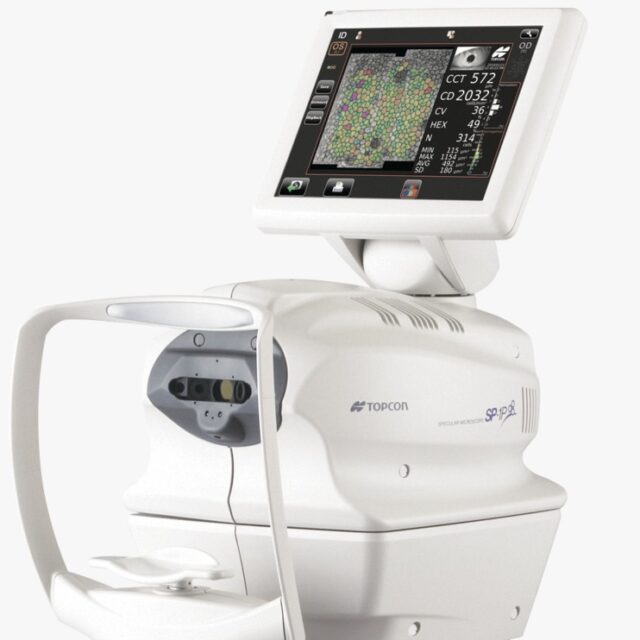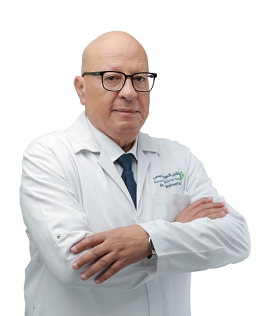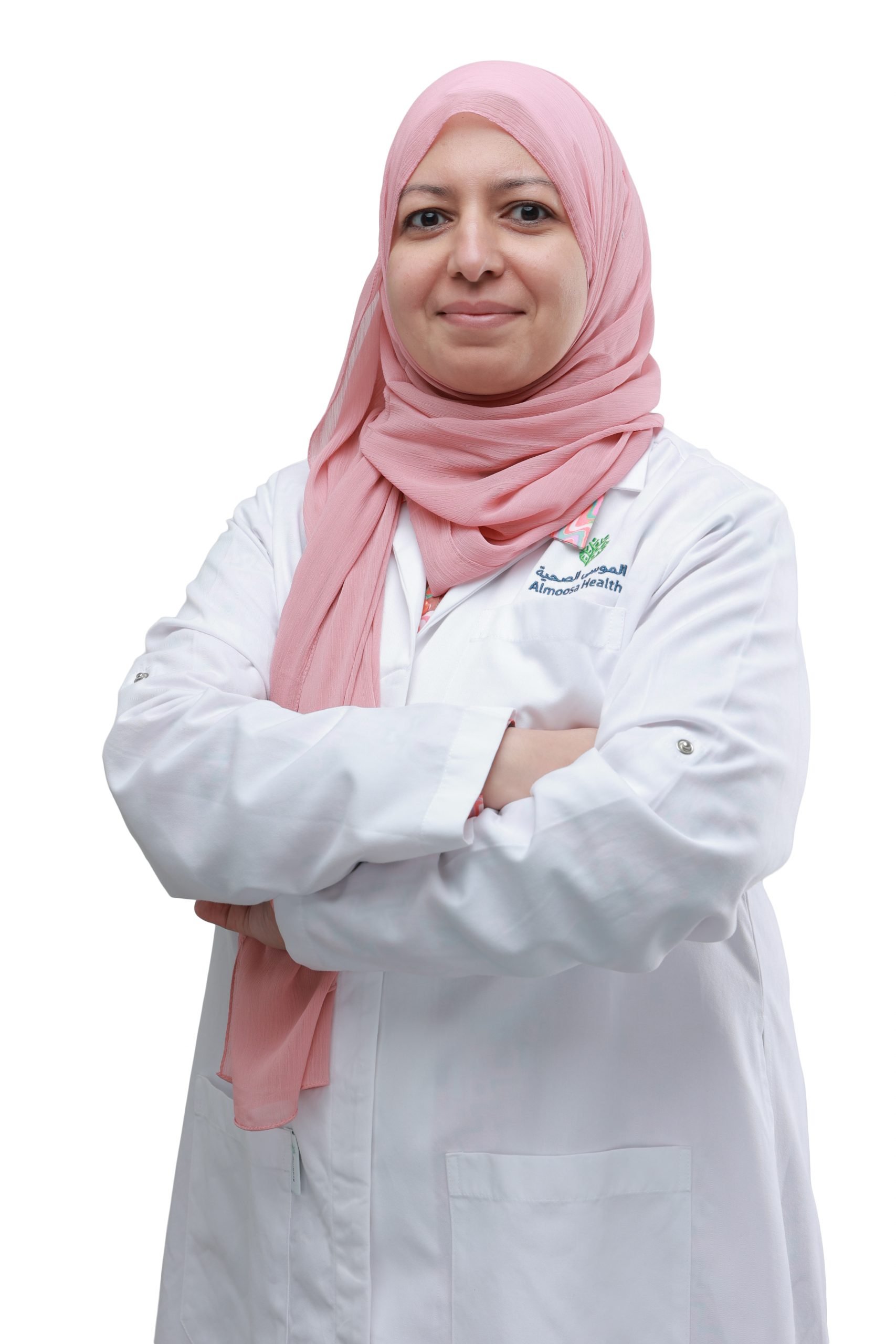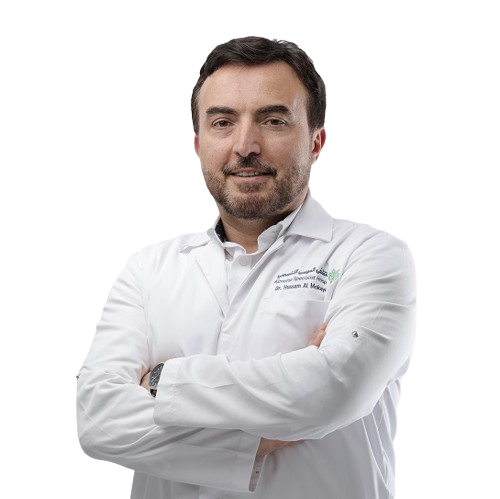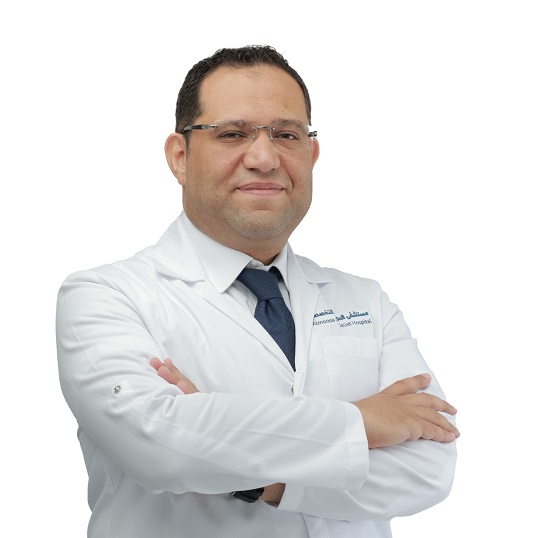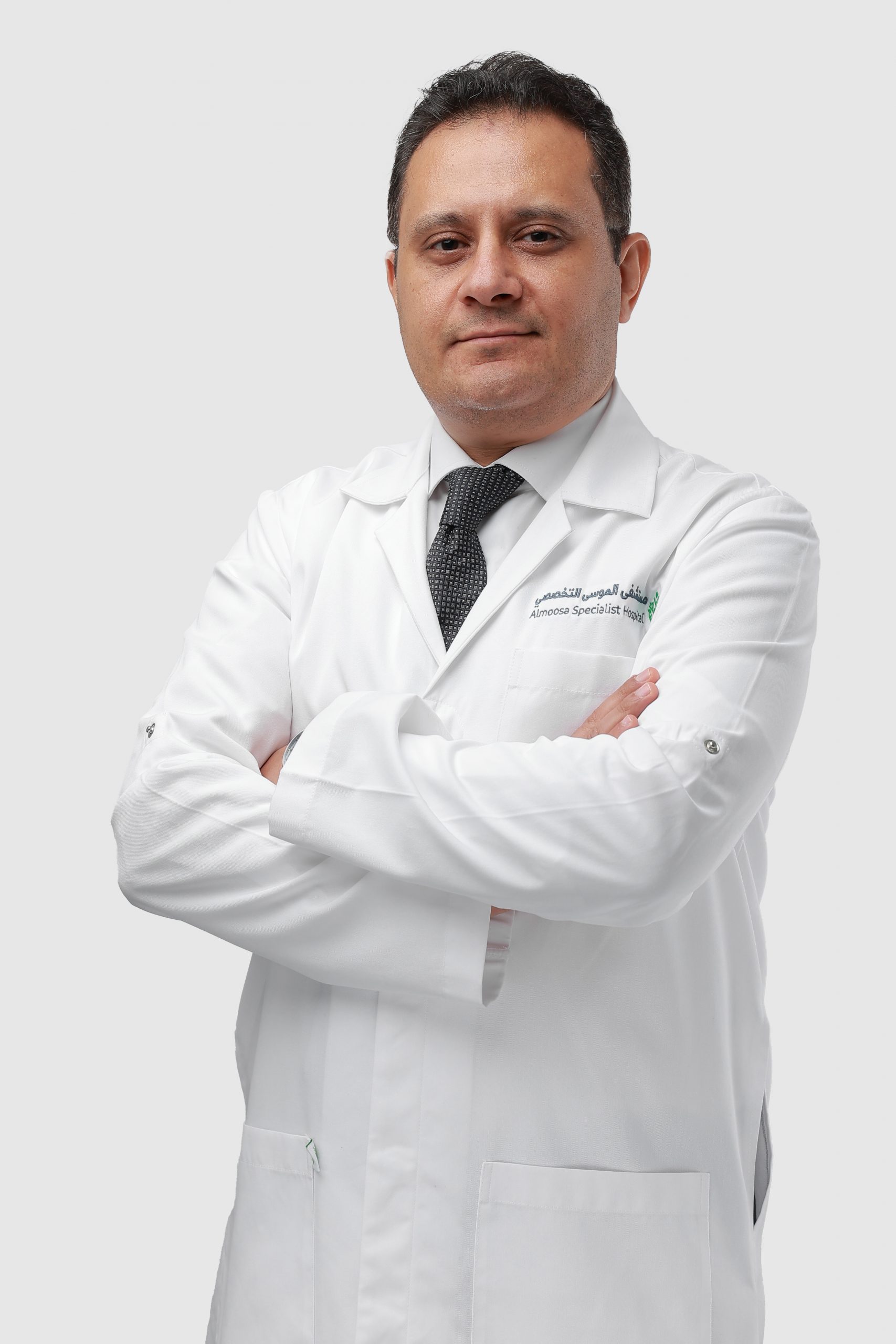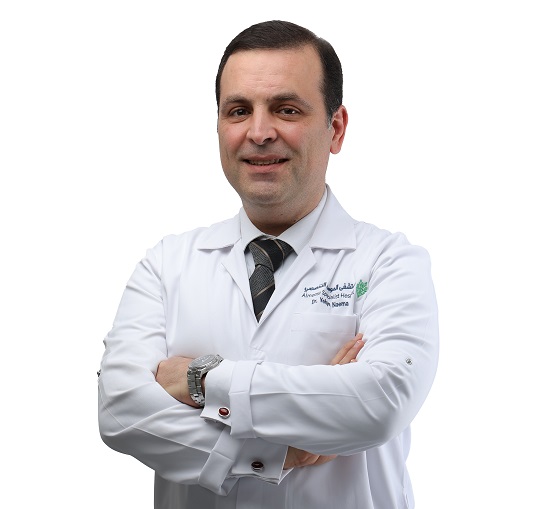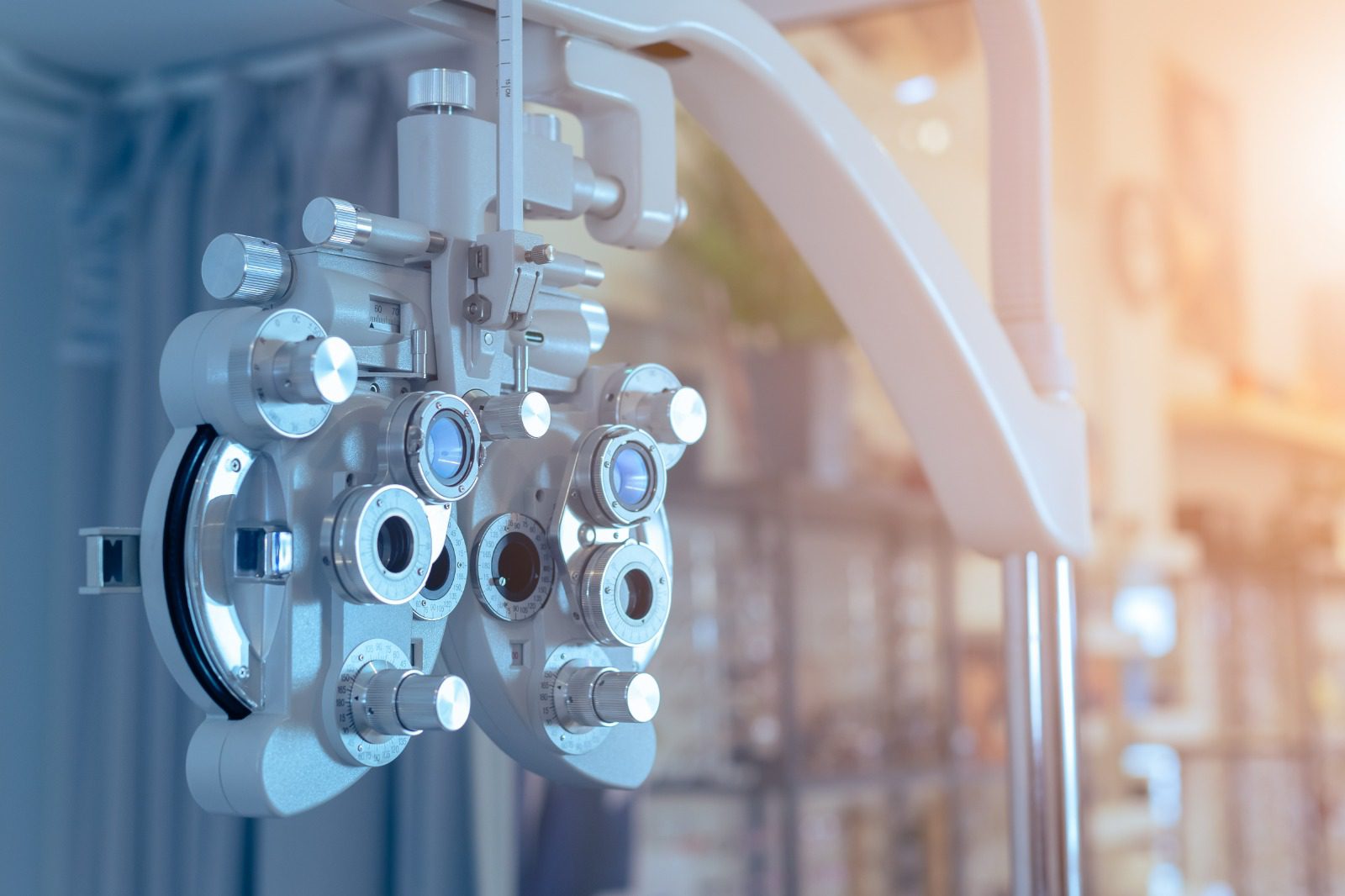
Eye Center
About the center
The eye center within Al-Moosa Specialist Hospital is one of the best-advanced medical centers for eye treatment in the region in terms of efficiency, medical equipment, facilities, and services provided to patients.
The center is one of the leading centers in the field of femtolasik, all types of laser vision procedures, treatment of retinopathies, and vitreous surgeries, in addition to performing cataract operations , surgical correction of Squint in children and adults , and treating other diseases related to the eye.
Services
The center is equipped with the latest medical technology and the most experienced ophthalmologists and surgeons in the Kingdom. There are six fully-equipped clinics with the latest ophthalmology medical units at the facility. As part of the facility, four rooms are dedicated to optics and eyeglass prescription, as well as six examination rooms with the most advanced technology in a clean and sterilized environment in order to maintain the eye’s safety.
Vision Correction Unit
The FemtoLASIK vision correction process is one of the most advanced technology used internationally in the treatment of Refractive errors by laser, and it is considered one of the qualitative leaps in the process of correcting vision defects as it uses laser beams completely without the presence of any surgical blade in the procedure. .
Features of the Intralasek procedure :
- Without any pain.
- High speed in the process.
- Without a blade , making it safe and accurate.
- No need for general anesthesia, only topical anesthesia.
- The patient needs to wear sunglasses for one day after surgery then he/she can can practice his normal life on the next post operative day after the operation.
We at Al-Moosa Specialist Center always use the latest devices in our operations and use the latest tried and proven medical technologies internationally, so we are keen to use the German SCHWIND device, which is distinguished from the rest of the devices by the following:
- The ability to perform the operation without touching the eye, and without using the surgical blade , which is called TRANS PRK technology.
- The device is equipped with the fastest eye movement tracking system during the application of the laser, to obtain the highest possible accuracy.
- The high speed of the device, which shortens the operation time.
When do we use femtolasik and Trans PRKoperations?
- shortsighness ( myopia)
- astigmatism
- farsightedness ( hyperopia)
Exceptions to the use of vision correction operations:
- Patients with cataracts in the eyes.
- Patients infected with the herpes virus.
- Patients with severe dry eyes.
- Pregnant women due to hormonal changes that affect degrees of vision.
Femtolasek aftercare advice
- Refrain from rubbing the eye.
- Avoid getting water into the eyes 3 days after the operation.
- Stay away from any heat source that may lead to dry eyes
- Use moisturizing drops prescribed by a doctor to avoid dry eyes.
Laser and retinal surgery
Al-Moosa Specialist Hospital’s Eye Center treats diabetic retinopathy and retinal vein occlusion by laser or injection of medicine into the eye and achieves impressive results with high success rates.
Laser treatment at the center is conducted using the Argon laser machine from PASCAL, a pioneer in the production of this type of laser, which provides high speed and accuracy.
The center also provides many benefits and services with the highest level of accuracy and professionalism, such as: ·
- Laser examination and treatment for cases of retinopathy of prematurity (babies born less than 9 months pregnant).
- Vitreous injection for treating visual center infiltration caused by diabetic retinopathy .
- Macular degeneration associated with age.
- Retinal vein occlusion.
- Retinal detachment repair.
- Retinal fixation using gas.
- Vitrectomy for retinal detachment, vitreous hemorrhage, and advanced diabetic retinopathy.
Corneal surgery
The cornea is an important part of the eye, as it is the transparent front part of the eye through which light enters the eye, and its problems are common among people.
Hereditary diseases, aging, or surgical interventions into the eye can weaken or atrophy the cornea, leading to severe blurry vision. Consequently, doctors may perform corneal transplantation, causing a significant and clear change in the patient.
A remarkable development in corneal transplantation operations has occurred recently, whereby only a healthy layer (donated after death) replaces the inner layer of the cornea, and without surgical sutures, the cornea lining is fixed by air in the eye
- Eyesight is improved by replacing the inner corneal layer without any additives.
- Vision improved within a few days.
- No surgical stitches.
- Immune rejection is very low (less than 1%) compared with cases of corneal transplants of entire layers (10-20%).
Dealing with the cornea requires high levels of accuracy and medical knowledge. Our Eye Center at Almoosa Specialist Hospital has a special department dedicated to corneal care using the latest medical equipment
corneal transplantation operations
- PKP full-thickness cornea transplant
- Partial-thickness DALK cornea transplant
- DMEK / DSAEK keratoplasty.
Laser treatment for recurrent corneal erosions
Keratoconus treatment and surgeries
- Keratoconus can be treated with corneal rings implanted using a femtosecond laser device, which gives better and more accurate results.
- Cross-linking the cornea to stop the progression of Keratoconus, a condition in which the cornea gradually curves from an asymmetrical dome to an asymmetric cone.
Cataract surgery
Using Phacoemulsification technology, cataract surgery can be done by displacing the affected lens, withdrawing the fluid, and implanting an artificial lens without surgical stitches. It results in rapid vision rehabilitation following cataract surgery, and patients frequently regain normal vision within days.
After surgery, implanting premium lenses (trifocal and astigmatic) reduces the need for glasses. Trifocal lenses allow patients to see clearly at distances and near without glasses, while astigmatic lenses correct preexisting astigmatism and enable distance vision.
Corrective lens implantation
Some patients with high Refractive errors cannot be treated with femtolasik nor Trans PRK,, so doctors resort to treat them using corrective lenses implants to treat refractive , which include
- ICL lenses: Made of high-quality material specially designed for implantation directly in front of the natural lens, and can be used in the treatment of long or short-sightedness.
- trifocal lenses: which help the patient to see clearly near and far without using glasses. .
- Astigmatism lenses: which are used to create a clear image on the retina and improve vision
Pediatric eye surgery
Eye problems and squint are common problems in children, which require intervention at an early age in order to control the problems as much as possible, raise the rate of healing, and return of the eyes to normal.
In many cases, the treatment of strabismus depends on the degree of disease progression in the condition, so parents should realize that treatment in the form of glasses, eye drops, exercises, or eye muscle surgery, is effective when it is taken early in the child’s development, Whereas when the strabismus condition progresses in the child, doctors may resort to a surgical solution.
It is possible to perform squint repair operations within the Eye Center at Al-Moosa Specialist Hospital through some modern medical interventions, such as:
- Weakening of some of the oculomotor muscles: such as weakening the internal rectus muscle in cases of the esotrpia by returning it back a certain distance according to the measured angle of strabismus, or weakening the external rectus muscle in cases of exotropia by returning it back.
- Strengthening some of the muscles that move the eye: such as removing part of the muscle to shorten it or bend the muscle, and it is also used for the muscles to be strengthened, such as strengthening the external rectus muscle in some cases of esotropia. .
- Changing the course of some muscles: such as changing the course of the lower oblique muscle in some vertical strabismus repairs.
Also we have new modality to treat Squint by botox injection in some muscles without the need for surgery.
DCR-Dacryocystorhinostomy
This operation aims to form a new tear duct between the eye and the nose when a blockage occurs in the original tear duct. In the event of a blockage or narrowing of the normal tear duct, the patient may suffer from swelling around the eye and frequent infections within it.
During the process of widening the tear duct, the tear ducts are opened so that the tears are diverted through the nose, and the operation is performed laparoscopically, which is a minimally invasive procedure that aims to open the blocked tear ducts.
This process is very similar to the process of expanding the tear duct externally, except that it does not require a surgical incision and does not leave a scar or a trace on the skin.
Technologies
Other Devices
- Fluorescein Angiography Device.
- A visual field examination device.
- A device for measuring the power of the lens that is to be implanted inside the eye.
- Echo device to examine the posterior section of the eye.
- IPL laser machine to treat dry eye with laser, simple procedure that can relieve symptoms dramatically, and it takes just few minutes
Why ASH Eye Center?
The Eye Center crews at Al-Moosa Specialist Hospital take good care of your eyes. Our teams are known for their high efficiency, long experience, and full care for patient comfort.
In addition to our modern equipment that keeps pace with the latest in modern medical science, so do not hesitate to visit us and take reliable medical advice.
Always make sure that our attention to simple details is what makes Al Moosa Specialist Hospital special!
Our Doctors

